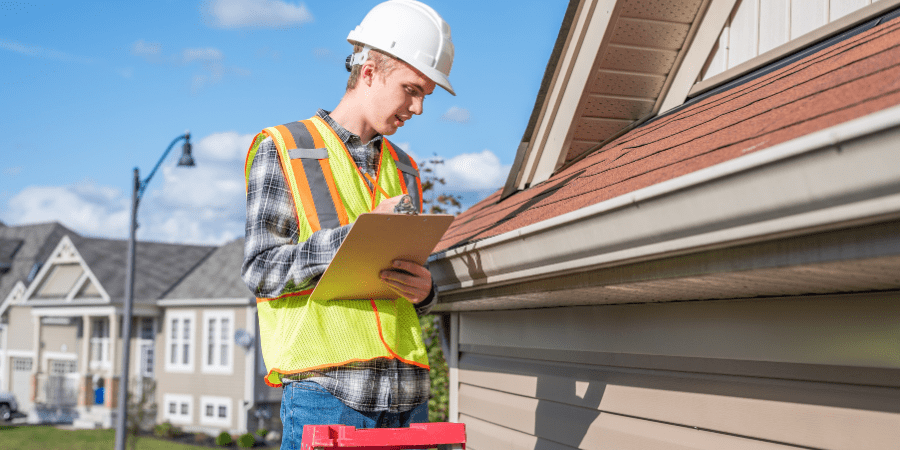Achieving NSPIRE compliance is critical for property managers and owners who want to ensure that their properties meet the highest HUD standards for health, safety, and habitability. In this post, we explore how a property manager successfully transformed a non-compliant property into one that passed the NSPIRE inspection with flying colors. This case study provides valuable insights into the NSPIRE compliance process, outlining the steps taken to achieve full compliance and the role of NSPIRE Experts in the process.

What is NSPIRE Compliance?
NSPIRE Compliance Explained
NSPIRE compliance refers to meeting the standards set by HUD under the National Standards for the Physical Inspection of Real Estate (NSPIRE) program. These standards aim to ensure that property owners maintain safety, habitability, and proper maintenance for properties receiving federal funding. Compliance with NSPIRE is essential for property owners and managers to continue receiving HUD assistance and to avoid penalties or funding cuts.
For more information on NSPIRE standards, visit the NSPIRE Program Overview.
Key Benefits of NSPIRE Compliance
Achieving NSPIRE compliance brings several key benefits, including:
- Increased Tenant Safety: Compliance ensures that properties are safe for tenants, which is a top priority for HUD.
- Sustained Funding: Meeting NSPIRE standards helps property managers maintain eligibility for federal funding, such as Housing Choice Vouchers.
- Enhanced Property Value: Property owners who meet NSPIRE standards maintain their properties better and make them more attractive to potential tenants.

Overcoming Challenges to NSPIRE Compliance
Common Issues Leading to Non-Compliance
Many properties face common challenges when it comes to NSPIRE compliance. Some of the most frequent issues include:
- Plumbing Issues: Leaks, low water pressure, and non-functional water heaters are common issues that can result in non-compliance.
- Electrical Problems: Inspectors may flag faulty wiring or inadequate electrical systems during NSPIRE inspections, which can lead to failure.
- Safety Hazards: Missing or faulty smoke detectors, blocked fire exits, or unsafe structural features can prevent properties from passing the NSPIRE inspection.
Understanding the NSPIRE Inspection Process
The NSPIRE inspection process is based on a scoring system that evaluates the property on various factors, including safety, habitability, and system functionality. Failing to meet certain thresholds in these areas can negatively affect the property’s score, impacting its eligibility for federal funding.
For a detailed breakdown of how NSPIRE scoring works, visit our article regarding nspire score.

Financial Implications of NSPIRE Compliance
Achieving and maintaining NSPIRE compliance isn’t just about passing inspections—it’s about securing long-term financial stability for your property. Whether you’re a property manager, owner, or housing authority official, understanding the financial implications of NSPIRE compliance can help you make informed decisions and avoid costly mistakes. Below, we’ll explore how NSPIRE compliance affects funding, subsidies, and your overall financial situation.
How NSPIRE Compliance Affects Funding
One of the primary reasons for maintaining NSPIRE compliance is its impact on federal funding, including Housing Choice Vouchers. When properties fail to meet NSPIRE standards, they risk losing their eligibility for HUD assistance programs. These subsidies are crucial for maintaining affordable housing and supporting tenants, so compliance is essential to avoid disruptions in funding.
For instance, if your property fails a NSPIRE inspection, it may not only affect current funding but also jeopardize future assistance. This can result in a loss of Housing Choice Vouchers, which are vital for providing affordable housing to tenants. Property managers should understand that failing to meet NSPIRE compliance can severely impact the financial viability of their properties.
For more context on how HUD’s funding and NSPIRE compliance work, visit Housing Choice Vouchers Guidance.
Cost of Non-Compliance: How Failing NSPIRE Inspections Can Impact Your Bottom Line
Failing to meet NSPIRE compliance can result in significant financial risks for property managers and owners. These include:
- Loss of HUD Funding: Non-compliance may lead to the loss of Housing Choice Vouchers and federal assistance, directly impacting cash flow.
- Fines and Penalties: Non-compliance can also lead to fines, further straining the property’s budget.
- Increased Operational Costs: Unresolved NSPIRE compliance issues can lead to higher maintenance costs, emergency repairs, and more frequent inspections, increasing overall expenses.
Proactively addressing NSPIRE compliance through regular maintenance, pre-inspections, and repairs can help mitigate these risks and protect your bottom line. By staying ahead of potential compliance issues, you ensure the property remains eligible for funding and avoid the financial strain that comes with failing an inspection.

Steps to Achieve NSPIRE Compliance
Step 1: Conducting a Pre-Inspection
A NSPIRE pre-inspection is one of the most crucial steps to ensure that your property is ready for the official inspection. Conducting a pre-inspection helps identify potential deficiencies before they become major issues. It also gives property managers the time to make necessary repairs, ensuring early resolution of problems.
At NSPIRE Experts, we offer comprehensive NSPIRE pre-inspection services. Learn more about how to prepare for a successful NSPIRE inspection by visiting our NSPIRE Pre-Inspection Brochure.
Step 2: Addressing Critical Repairs
Once deficiencies are identified during the pre-inspection, the critical repairs are addressed next. This includes fixing plumbing issues, updating electrical systems, and ensuring that safety features are functioning properly.
Step 3: Implementing Routine Maintenance
NSPIRE compliance is not just about passing the inspection but maintaining compliance over time. Implementing a regular maintenance schedule ensures that the property remains in good condition and reduces the risk of failing future inspections.
For help with ongoing maintenance and compliance, explore our property management services.

Why NSPIRE Experts Are Key to Your Compliance
How NSPIRE Experts Help You Comply
At NSPIRE Experts, we specialize in helping property managers navigate the NSPIRE inspection process. From pre-inspections to repair recommendations and inspection shadowing, our team provides expert support to ensure your property meets all NSPIRE compliance requirements.
Our NSPIRE pre-inspection services allow you to identify potential issues early, saving time and avoiding costly repairs. Learn more about how we can help by scheduling a NSPIRE Consultation.
Expert Support for NSPIRE Inspections
Partnering with NSPIRE Experts gives property managers access to in-depth knowledge of NSPIRE compliance. Our team can guide you through every phase of the inspection process. Expert advice on necessary repairs will be provided, and inspectors can be accompanied during the inspection to ensure your property is evaluated fairly.

Case Study: Achieving NSPIRE Compliance
The Property’s Initial State: A Breakdown of Non-Compliance Issues
In this case study, it will be explored how a property, initially struggling with several compliance issues, was successfully transformed into a NSPIRE-compliant property. The property faced a range of problems, such as plumbing leaks, faulty smoke detectors, and an outdated HVAC system. As a result, these issues put the property at risk of failing the NSPIRE inspection process. However, with targeted efforts, these challenges were addressed, resulting in a positive outcome.
The Plan for Achieving NSPIRE Compliance
To turn the property around, we developed a comprehensive action plan that included:
- Pre-inspection services to identify deficiencies
- Immediate repair of critical issues like plumbing and HVAC
- Routine maintenance to prevent future non-compliance
Successful Results: How NSPIRE Compliance Was Achieved
After implementing the action plan, the property passed the NSPIRE inspection with a high score, meeting all NSPIRE compliance standards. The property now receives consistent HUD funding and is considered a model for successful compliance.
Conclusion: Achieving and Maintaining NSPIRE Compliance
Achieving NSPIRE compliance is crucial for property managers who want to maintain HUD funding, ensure tenant safety, and uphold the integrity of their property. By conducting pre-inspections, addressing critical repairs, and implementing a routine maintenance schedule, property managers can ensure long-term compliance with NSPIRE standards.
To get started on your path to NSPIRE compliance, contact NSPIRE Experts today and take the first step toward a successful inspection. Learn more about our services or schedule a consultation to get expert advice tailored to your property.
